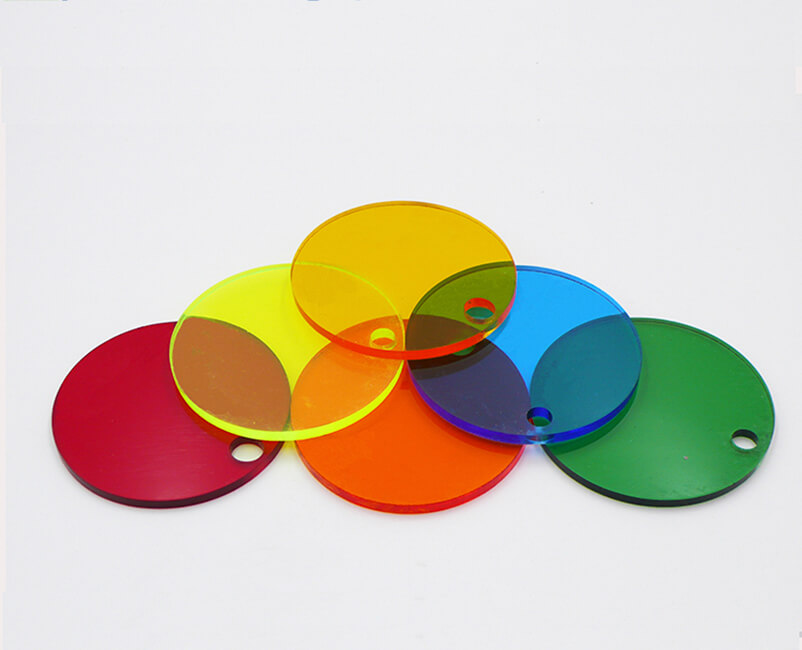PS Sheets exhibit varying degrees of transparency and optical clarity, which can make them suitable for specific applications, especially where visual appeal is important. However, their overall durability in terms of maintaining optical quality over time is affected by several factors. Here’s an in-depth analysis of PS Sheets’ performance in this regard:
PS Sheets can be manufactured to be highly transparent, similar to materials like acrylic or glass, and are often used in applications where clarity is essential. They are frequently used in items such as point-of-purchase displays, lighting diffusers, and packaging materials where visibility is critical.
The surface of PS Sheets can achieve a high-gloss finish, enhancing their optical appeal. This feature makes them attractive for displays or signage where a polished appearance is needed.While PS Sheets can achieve good light transmission, they do not match the clarity of higher-end materials like acrylic or polycarbonate. The light transmission rate of PS Sheets is typically around 88-92%, which is still effective but slightly lower than acrylic (around 92-94%).
One of the key drawbacks of PS Sheets is their susceptibility to scratching. They are more prone to surface scratches than other transparent materials, which can diminish their optical clarity over time.Frequent handling, cleaning, or exposure to abrasive materials can lead to scuffing or micro-scratches, which may cause haze or distort the clarity of the sheet. This makes PS Sheets less durable in applications where frequent contact is expected, like protective barriers or display cases.
PS Sheets generally have poor UV resistance, and exposure to sunlight or UV rays can lead to yellowing and loss of transparency over time. This degradation is a significant issue in outdoor or exposed environments where long-term optical clarity is required.Prolonged UV exposure not only causes yellowing but also makes the material brittle, further reducing its durability. As the material becomes more brittle, it can develop cracks or fissures, which also affect optical clarity.
Some manufacturers apply UV-resistant coatings to PS Sheets to improve their durability in outdoor applications. These coatings help protect the material from yellowing and preserve clarity longer, but they add to the cost and complexity of production.

PS Sheets are susceptible to damage from certain solvents and cleaning agents, such as acetone, alcohols, or petroleum-based products. These substances can cause the sheet to cloud, crack, or develop surface irregularities, reducing optical clarity.To maintain transparency, PS Sheets must be cleaned with non-abrasive, mild cleaning agents. Harsh chemicals can permanently damage the surface, so gentle methods, like using water with a soft cloth, are recommended to extend the lifespan of the sheet's optical quality.
PS Sheets can be customized to provide light diffusion properties, which makes them suitable for applications like light diffusers in luminaires or backlit displays. By diffusing light evenly, PS Sheets can reduce harsh shadows and create uniform light distribution.
PS Sheets can be manufactured in varying degrees of translucency and haze, allowing them to be used in applications that require privacy or controlled light transmission. For example, frosted or semi-transparent PS Sheets are often used in partitions, lamp shades, and decorative panels where light diffusion is more important than complete transparency.
Compared to acrylic or polycarbonate, PS Sheets are more cost-effective, making them an appealing option where high optical clarity is needed but budget constraints exist. However, this cost-saving comes with the trade-off of lower durability in terms of maintaining clarity over time, especially in demanding environments.
In cases where visual transparency is less critical than other factors (e.g., temporary signage, packaging windows, or short-term displays), PS Sheets provide an affordable solution with acceptable optical properties.
PS Sheets have lower transparency and optical clarity compared to acrylic, which is often preferred for its better scratch resistance, UV stability, and higher light transmission. Acrylic retains its clarity over time better than PS.Polycarbonate is more durable than both PS and acrylic in terms of impact resistance and UV resistance. While it has similar transparency, it is chosen for more demanding applications like protective glazing or high-stress environments, where PS would not hold up as well.
Proper cleaning and care, along with UV-resistant coatings, can extend their lifespan in applications where optical clarity is important.
 English
English 中文
中文 Español
Español


